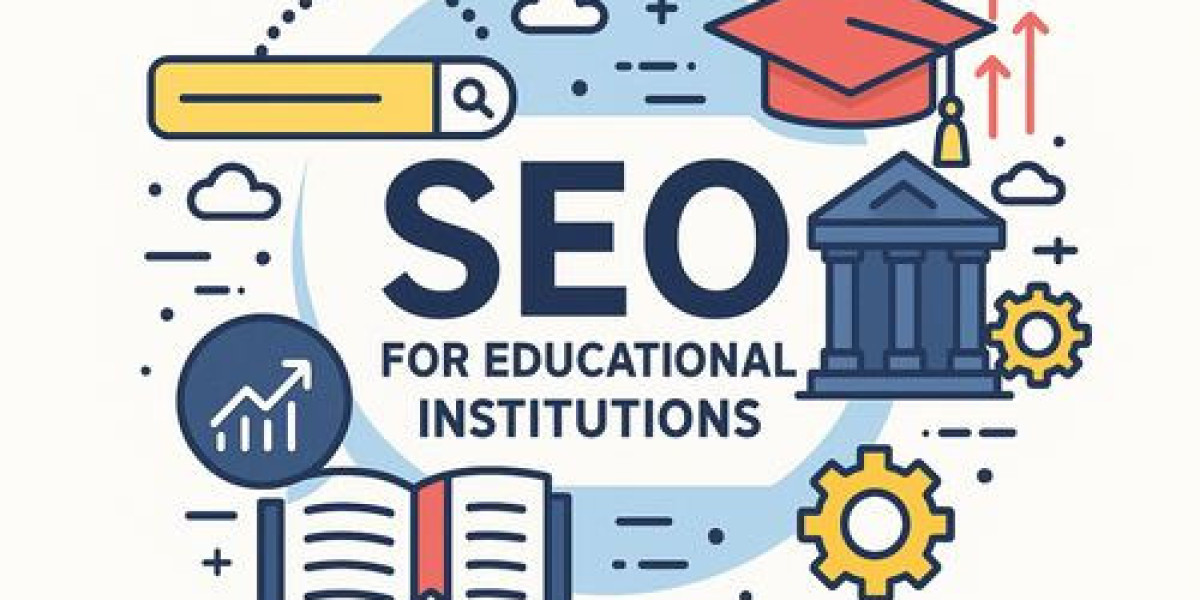In the ever-evolving digital landscape, educational institutes can no longer rely solely on traditional marketing methods to attract students. Whether it’s a coaching center, school, college, or university, having a strong online presence is crucial. This is where SEO for educational institutions comes in. With the right search engine optimization strategies, educational institutions can significantly increase their visibility, attract the right audience, and build credibility in the competitive education market.
In this blog, brought to you by Adomantra, a top-rated digital marketing agency in India, we’ll explore the most effective SEO strategies tailored specifically for educational institutions.
Why SEO Matters for Educational Institutions
Search Engine Optimization (SEO) helps your institution appear on top of search engine results when prospective students search for courses, schools, or educational services. Consider this:
Over 80% of students use Google to search for colleges or training programs.
More than 60% of students click only on the top three results.
Without a solid SEO strategy, your institution might be invisible to these potential learners.
Key SEO Strategies for Educational Institutes
1. Keyword Research: Know What Your Students Are Searching
Start by identifying what your prospective students are typing into Google. Use tools like Google Keyword Planner, SEMrush, or Ubersuggest to uncover high-volume and relevant keywords.
✅ Example keywords:
"Best engineering colleges in Mumbai"
"Online MBA courses in India"
"NEET coaching in Delhi"
Tips:
Use both short-tail and long-tail keywords.
Include location-based keywords to attract local searches.
Add keywords naturally in titles, meta descriptions, headings, and content.
2. Optimize Your Website Structure and Speed
A poorly structured website with slow loading time can frustrate visitors and increase bounce rates—both of which hurt SEO rankings.
Checklist:
Mobile-friendly design (responsive)
Fast-loading pages (optimize images, use caching)
Simple and logical navigation
Clear call-to-actions (CTAs): “Apply Now”, “Download Brochure”, etc.
Tools like Google PageSpeed Insights and GTmetrix can help assess and improve performance.
3. Create High-Quality, Educational Content
Educational institutions have a massive advantage—they are content-rich by nature. Leverage this!
Content ideas:
Informational blogs: “Top 10 Tips to Crack JEE Advanced”
Student testimonials and success stories
Course details and comparison guides
Career advice and industry trends
Pro tip: Use a content calendar to regularly publish SEO-optimized blogs. Ensure every blog includes internal links to relevant course pages or contact forms.
4. On-Page SEO Optimization
On-page SEO ensures that each web page on your site is fully optimized for both users and search engines.
Best practices:
Use H1, H2, H3 tags correctly
Include the focus keyword (e.g., "SEO for educational institutions") in the title, URL, first paragraph, and meta tags
Optimize images with alt-text
Write unique and compelling meta titles and descriptions
5. Build Backlinks for Authority
Backlinks are links from other websites to yours, and they serve as “votes” of credibility in Google’s eyes.
Ways to build backlinks:
Partner with educational blogs or directories
Submit guest posts to reputed education websites
Get listed in local directories and Google Business
Encourage alumni or partner institutions to link back
Strong backlink profiles improve Domain Authority (DA) and search engine ranking.
6. Use Local SEO to Target Regional Students
If your institute primarily serves a city or region, local SEO is your best friend.
Tips for local SEO:
Create or claim your Google Business Profile
Add NAP (Name, Address, Phone Number) details consistently across all directories
Use location-specific keywords: “CBSE schools in Bangalore”
Encourage students and parents to leave positive Google reviews
Local SEO increases footfall to your campus and visibility among your nearby audience.
7. Leverage Social Media for SEO
While social media signals are not a direct ranking factor, they influence SEO indirectly by driving traffic, increasing content reach, and building brand awareness.
Share blogs, videos, and updates across platforms
Add share buttons to all blogs and pages
Engage with student queries on platforms like Instagram, LinkedIn, and Facebook
Also, embedding YouTube videos or student interviews improves dwell time on site—another positive SEO signal.
8. Track, Measure, and Improve
No strategy is complete without regular analysis.
Use tools like:
Google Analytics – to track visitor behavior
Google Search Console – to monitor indexing and search performance
SEMRush / Ahrefs – for keyword tracking and backlink analysis
Focus on metrics like:
Organic traffic growth
Bounce rate
Average session duration
Keyword rankings
Conversion rates (inquiries, sign-ups)
Refine your strategy monthly based on these insights.
How a Digital Marketing Agency Can Help
Partnering with an experienced digital marketing agency in India like Adomantra offers a strategic edge. We specialize in helping educational institutions:
Perform SEO audits and technical fixes
Develop keyword-optimized content strategies
Manage link-building and outreach campaigns
Optimize local SEO and directory listings
Track, analyze, and report campaign performance
We understand the nuances of student behavior online and tailor SEO efforts to get real results—more visibility, inquiries, and admissions.
Conclusion
In today’s digital-first education system, mastering SEO for educational institutions is essential—not optional. Whether you’re running a school, college, coaching institute, or online course, investing in effective SEO strategies will pay long-term dividends in terms of traffic, leads, and authority.
Want to take your educational institution to the top of search engine results? Connect with Adomantra, your trusted digital marketing agency in India, and let us help you climb higher.
FAQs: SEO for Educational Institutions
1. What is SEO for educational institutions?
SEO for educational institutions involves optimizing their online presence so that they appear prominently in search results when students search for courses or programs.
2. Why is SEO important for schools and colleges?
SEO increases your visibility, credibility, and student admissions by bringing more organic traffic to your website.
3. How long does it take to see SEO results?
Typically, results can be seen in 3–6 months, depending on competition and strategy.
4. What are the best keywords for educational SEO?
Keywords like “best schools in [city]”, “MBA courses online India”, or “top colleges for engineering” are often used.
5. How does local SEO help?
Local SEO boosts visibility in nearby regions, attracting local students searching on Google.
6. Should educational institutions blog regularly?
Yes, blogging helps with keyword ranking, improves user engagement, and establishes domain authority.
7. Can I do SEO myself or hire an agency?
You can start with basic SEO yourself, but hiring a digital marketing agency in India like Adomantra ensures faster and professional results.
8. How much does SEO cost for educational institutions?
Costs vary depending on the scale, competition, and goals but usually range from ₹20,000 to ₹1,00,000 per month.
9. Is social media important for SEO?
Indirectly, yes. Social media increases content visibility and traffic, both of which are good for SEO.
10. How can Adomantra help with SEO for my school or college?
We offer customized SEO solutions, from audits and keyword planning to content marketing and backlinks, tailored to the educational sector.






